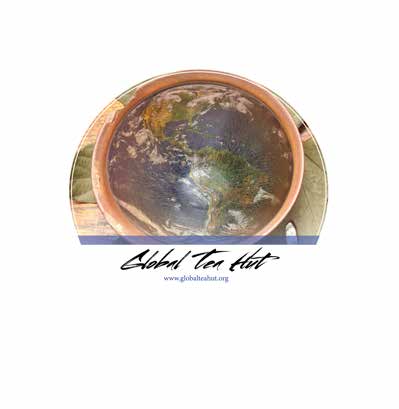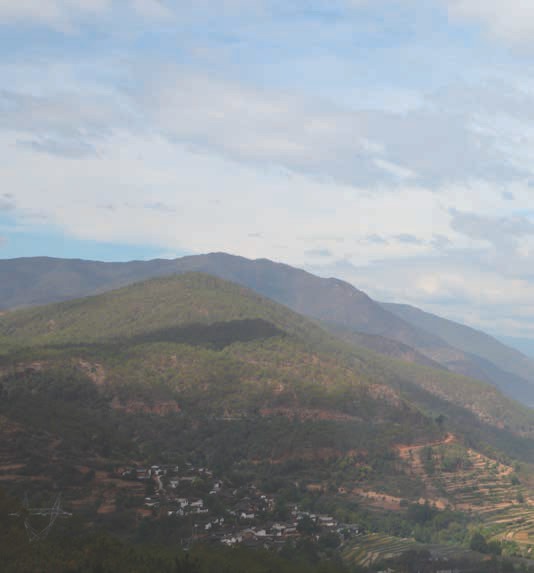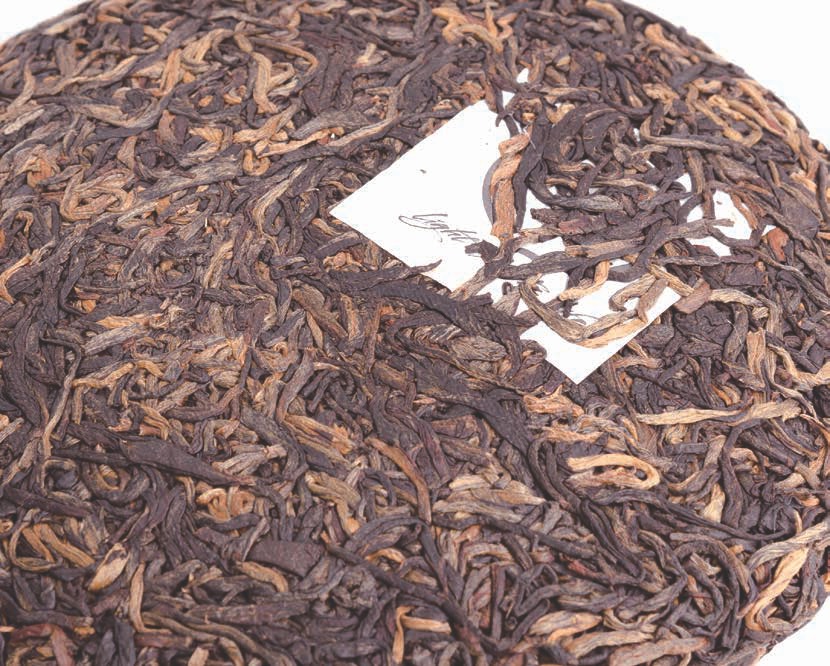
 |
|


We have a very special tea to share this month. This is the third tea we've sent out this year that is also one of our six Light Meets Life fundraiser cakes (the other two are Mountain Wind and Rainforest). "Dian" is the aboriginal word for Yunnan and "hong" is red. This month's Dian Hong is called "Mountain Rain". It is one of the best red teas we have had in a while, deep and grounding with vibrant energy. But before we discuss Mountain Rain, let's learn a bit more about red tea, as well as about tea categorization in general:
In the West, we find that there is sometimes a slight confusion in written tea materials about the nature of these categories. It is often said that all tea is a single species, Camellia sinensis, and that the differences in the categories of tea are all to do with how the tea is processed. There is some truth in this, which is why it is so often published throughout the tea world, but it is also potentially misleading. Actually, the only genre of tea that this really applies to is red tea, which is incidentally the most popular tea in the West, which perhaps explains some of the confusion. However, for the other kinds of tea (white, green, yellow, black, oolong and puerh) tea is as much a kind of tree(s) as it is a processing methodology.
A category of tea is a mind-made concept, and can be as simple or complicated as you want, depending on what you are trying to convey. How we categorize tea, or anything else, doesn't really change the world itself; but rather our ideas, interpretations and communication of it. The idea is that the categories we use should be as accurate a reflection of our understanding as possible. And that will depend on what we are trying to communicate. From a more open, spiritual perspective, for example, Tea is all of Nature. Since tea is made of water, which rained from clouds, needs sunshine to photosynthesize and is rooted deep in the mountain and minerals, there is a perspective from which you could look out on a tea tree and see the interbeing of all Nature, without categorical separation. From a simpler, down-to-earth way of looking at tea categories, viewing tea as reflection of processing alone is too myopic to be of value except in the most basic of explanations (and even then with some caveats). Again, that definition of tea really only works for red tea. For the other kinds of tea, it confuses as much as it helps you to understand or explore the world of tea. The truth is that the terroir of any tea is the culture, the agriculture of the people there, the soil and climate, the weather, the varietal(s) of tea and the processing methodology.
Once again, it is important to understand that what most Westerners call "black tea" is actually "red tea". Ordinarily, it doesn't matter what something is called, but in this case there is actually a problem, because there is another kind of Chinese tea that is called "black tea" (characterized by post-production, artificial fermentation). So if you call red tea "black tea", then what do you call black tea? The reasons for this error are to do with the long distances tea traveled in chests to Europe, and even more importantly with the general lack of information for the first few hundred years tea was traded. Europeans weren't allowed inland in those days, and never saw the tea trees or the processing either (except some roasting). Buying through middlemen in broken pidgin, you could see how easy it would be to spread misinformation. We repeat this every time we send a red tea, because it is an important mistake that we tea lovers have to correct in the world, so that the real black tea can have its name back!

As we mentioned in previous articles, there are essentially two kinds of tea trees: small leaf and big leaf. The big leaf trees are the original tea trees. They have roots that extend very deep and straight down, and have a single trunk leading to their crowns. Small leaf tea, on the other hand, is more like a bush, with roots that extend outwards, and with many trunks. As tea migrated north and east from its birthplace in Southwest China - whether naturally propagated or carried by man - it, of course, adapted to the new conditions and climate (terroir) it was transplanted into. This movement towards a bush with smaller leaves was mostly to do with the colder and colder climates; and in fact, you can see that the leaves actually get smaller and smaller the further north tea migrated, until you reach Japan where the leaves are so small that when rolled they look like tiny needles.
It can be confusing when tea people say that the categories of tea are strictly defined by processing methodology, because the seven kinds of tea weren't invented at once, but rather evolved over time in response to the variations in the plant as it changed terroir. It is a very modern, and in many ways unhealthy practice to tell Nature what to do. Traditional farming was always about accepting the bounty of Nature with gratitude, rather than coercing Her to give certain kinds of foods in certain amounts. Consequently, ancient tea farmers were conversing with their trees and adapting their skills to suit the tea they plucked. Cliff Tea processing was developed in response to certain bushes, in other words. And while you could potentially process any tea in the world in the same way you process a Wuyi Cliff Tea - and some people are doing that very thing, even right outside Wuyi province - it will never be the same as genuine Wuyi Cliff Tea. So is Cliff Tea a kind of tree or a kind of processing? It's hard to say, which is why the issue is complicated. But we think that reducing kinds of tea to just processing is a very human-centric approach, which doesn't account for Nature's role in the varieties of tea. By saying all tea is one plant and that the differences are just in the processing, we are categorizing tea based only on human work, and not on weather, soil, sun and tree, which might cause a myopia that makes one forget many important aspects of tea and Cha Dao.
In this day and age, farmers are more and more trying to set themselves apart by processing tea in unique ways: taking tea from trees that have been used to make puerh for hundreds of years and processing the leaves like red tea, for example. And sometimes the results of these experiments are amazing - even beginning whole trends in the industry, like the movement towards greener Tie Guan Yin in Anxi province, as well as in Taiwan, over the last two decades. For the most part, however, these experimental teas rarely compete with the traditionally processed teas of a region. The fact is that the processing of each particular kind of tea evolved over hundreds of years by skilled craftsman who were conversing and listening to the local leaves and refining their skills to produce the tea in the way that best suits it. There are exceptions, however, and it is important for innovation to continue, especially when the adaptation occurs in the true spirit of Tea!
The exception to all this is red tea. And since red tea is by far the most familiar tea in the West, it is easy to see why producers and consumers of it would think that this simplification applies to all tea. While you cannot make a Cliff Tea from any raw material other than Wuyi varietals (at least not well) you can make any tea into a nice red tea. Just as anyone with some wine experience would know that a so-called "champagne" made somewhere other than Champagne is not really champagne, a tea lover would know that the so-called "Cliff Tea" was not from Wuyi. But that isn't the case with red tea. You can take puerh and make nice red tea, or high-mountain oolong, etc.
Most red tea is processed in three or four phases: first it is picked and then it is withered, traditionally on bamboo trays stacked on shelves built to hold them. The withering of red tea is very long, usually from twelve to twenty-four hours. It is then rolled for an exceptionally long time, to continue the oxidation and break down the cells. It literally turns into a pasty mass in the process. Then it is dried, usually in an oven, or the sun in the case of Dian Hong like this month's tea.

Like August's tea of the month, "Elevation", Mountain Rain is different from most red tea. It has a lower degree of oxidation than most Dian Hong teas (or red tea in general). In fact, we chose it as a Light Meets Life cake because of this. The reason for the heavy oxidation in normal red tea processing is to make the tea sweet and delicious. Nevertheless, we have found that such extreme processing removes some of the tea's Qi, and distances it from the mountain and deep essence it touches. This is especially relevant when the tea leaves were plucked from old-growth, big leaf tea trees. The leaves of these largeleaf trees are often bitter and astringent, but we can accept a bit of that along with the sweetness, can't we? And isn't that a significant life lesson as well? In the end, we'd rather have a slightly less delicious tea with incredible and relaxing Qi than the other way around. Furthermore, when you find a Dian Hong that is a bit more "puerhy" (oxidized less, in other words), it will age faster and better than other Dian Hong teas. It also lends this tea breadth, root and power. We love our Dian Hong teas more puerhy. How about you?

This tea is from the village of Da Hu Sai in Lincang. The trees are chemical-free, grown naturally in forest gardens with very little human intervention, which means that the tea is vibrant and healthy "living tea". The Lincang region is the northernmost of the three major tea areas in Yunnan. It is also the birthplace of all tea. The forests there have the oldest trees, and deepest roots in Cha Dao. This tea was harvested in the spring of 2015.
The Da Hu Sai village tea is strong but Yin. The liquor is thick, with astringency and bitterness, but a fast transformation that leaves a sweet aftertaste in the mouth. Such a flavor profile is often considered the ideal in young puerh - both for drinking now and for aging. This red tea is only partially oxidized, and like its older sister, "Mountain Wind", this tea is full of Yin energy that is brisk and on the verge of changing to Yang, like a woman late in her pregnancy, a raincloud about to burst, or that dark time just before the dawn. We find the energy very uplifting, warming and yet so very Yin. You will love the powerful energy of this amazing red tea, one of the best we have ever had from Yunnan. And beyond these wonderful bowls we'll be sharing all month around the world, the good news is that if you do like Mountain Rain you can support Light Meets Life and get a cake or two to share with others!

The rain Washes away sediment That wasnt for the mountain anyway. It erodes the rock, as well And carries both rivulet, river to sea. After the thousand miles and The billion-year blink, Even the mountain will depart, Sea breezes rising water into the sky To mountain rain again...
A red tea like Mountain Rain can be brewed in a bowl or a side-handle pot. If you get the cake version, however, it will be better in a side-handle pot. Mountain Rain can also be brewed gongfu if you like. It is sometimes nice to brew red tea in an Yixing pot. Traditionally, one with taller, thicker walls would be used for red tea to preserve heat. Red tea, especially Dian Hong, responds to higher heat.
Of course, as we've learned this year, all tea starts with water and fire. So the first step to making a nice bowl or cup of Mountain Rain is to get some good water. If you don't have access to a natural spring nearby, taste many bottled waters to find the one that is smooth, clean and without flavor. It should be of a pH7 or so, with plenty of minerals. You can use bamboo charcoal, medicine stones, Yixing shards or other tools to soften and purify it. It also helps to use crystals or jade to change the energy of the water.
After water, comes fire. As we discussed, charcoal is ideal. If you can't use charcoal, choose gas or infrared to heat your nice water. Try to heat the water as fast as possible, in what was traditionally called "Martial Heat". For this tea, you will want to bring the water to a boil of "Fish Eye", which means the larger bubbles just before a full boil.
Making a "chaxi" or tea stage also enhances one's tea greatly. Choose a nice piece of wood, stone or a tea cloth (chabu) to decorate the session and set the time/ space apart. This helps us to celebrate the occasion itself. What a rare chance to be alive, awake, beautifully present, sharing tea with Nature or others you love.
Remember, the more you put into your tea, the more you get back! The quality is in the energy of each aspect. Master Lin always says that every little detail matters - maybe only a little bit, but those bits add up. Paying attention to details also allows for improvement in tea preparation and also an increase in sensitivity over time!